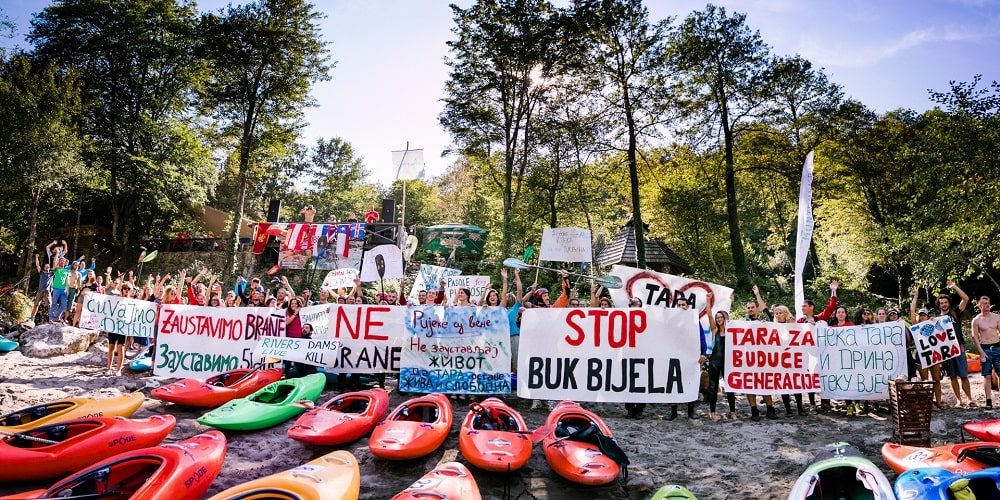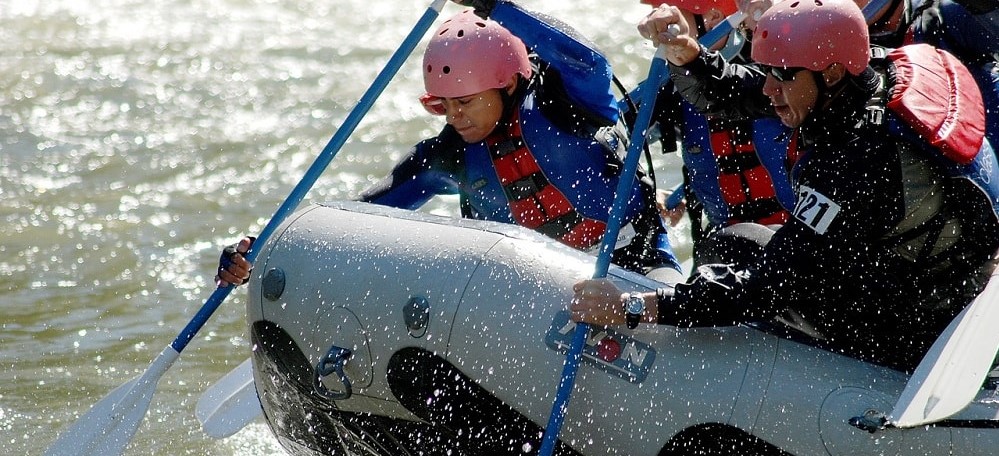Buk Bijela dam and the Upper Drina cascade
Planned as a joint project of public utilities owned by the Republika Srpska entity of Bosnia and Herzegovina and Serbia, Buk Bijela on the upper Drina is being pushed forward in violation of local legislation and international conventions.

Stay informed
We closely follow international public finance and bring critical updates from the ground.
Key facts
- Capacity: 93 MW
- Part of a series of planned hydropower plants on the upper Drina, along with the 44 MW Foča and 43 MW Paunci plants.
- In July 2017, a memorandum on construction of the project was signed with China National Aero-Technology International Engineering Corporation (AVIC-ENG).
- As of early 2022, no financing has been secured.
Key issues
- Hydropower plants on the upper Drina would wreck the key habitat for the Danube Salmon, an endangered fish species
- The environmental permitting processes have been marred with ubiquitous legal violations including a lack of transboundary consultations
- Ongoing legal dispute on whether Republika Srpska needs to obtain state-level consent to issue concessions for the project.
- Lack of information available to the public on the project’s feasibility.
Background
The river Drina is formed by the confluence of the Montenegrin rivers Tara and Piva at the border with Bosnia-Herzegovina. The 93 MW Buk Bijela hydropower plant is planned within Bosnia-Herzegovina, with its reservoir stretching upstream to the Montenegrin border.
Buk Bijela is being pushed by state-owned company Elektroprivreda Republike Srpske (ERS) and a memorandum on construction of the project was signed with China National Aero-Technology International Engineering Corporation (AVIC-ENG) in July 2017. We understand that Chinese state banks may be considering financing for the project, as the European Bank for Reconstruction and Development and the World Bank have both confirmed that they will not finance it.
A larger version of the Buk Bijela project has been disputed since the 1970s due to its impacts on the protected Tara canyon in Montenegro, which is both a UNESCO World Heritage site and part of the Durmitor National Park.
The newer version, while smaller, also suffers from a number of issues inherent to the location of the planned plant. These issues also apply to the Foča and Paunci hydropower plants planned further downstream. A fourth plant, the 44 MW Sutjeska plant, was also planned at some point but has not been mentioned lately.
Drina – the key habitat for the endangered Danube Salmon

The river Drina constitutes the most significant habitat for the endangered Danube Salmon (Hucho hucho) in terms of habitat length. Over the last 100 years Hucho hucho has undergone a massive decline. It is now found only in a few of southeast Europe’s cleanest rivers. This fish is highly sensitive to low oxygen and moderate levels of pollution and is a good indicator for river health. This means that, if the river was in the EU, the stretches of importance for the Danube Salmon, including the upper Drina, would almost certainly be in the Natura 2000 network of protected areas. Moreover, the EU Water Framework Directive virtually forbids projects that degrade the good ecological status of water bodies. So this project would be unlikely to be allowed. In fact, the IUCN assesses that the main current threat to the species is the flow regulation from hydropower dams which impact the species, and their prey, habitat and pollution. Hucho hucho is protected under Annex III of the Bern Convention and Annex II of the European Union Habitats Directive as a species of community interest whose conservation requires the designation of special areas of conservation. This means that, if the river was in the EU, the stretches of importance for the Danube Salmon, including the upper Drina, would almost certainly be in the Natura 2000 network of protected areas and definitely under the EU Water Framework Directive – which virtually forbids projects that degrade the good ecological status of water bodies.
The environmental impact assessment for Buk bijela confirms the presence of Hucho hucho in the Drina. It mentions the construction of fish passes and the fact that these have rarely been implemented in the past for economic reasons, but also that it is uncertain whether they are effective for large fish species like the Danube Salmon. It mentions instead the practice of creating artificial spawning areas. However this seems highly unlikely to be effective for a fish which requires well oxygenated, fast-flowing water and low temperatures.
[There must be] no hydropower development, including micro-hydropower in rivers holding self-sustaining populations of Danube salmon.
Freyhof et al. in the Hucho hucho in the Balkan region report
Legal battles
The upper Drina projects are subject to several ongoing legal cases.
Lack of evidence on the project’s feasibility
The upper Drina area has developed small-scale tourism facilities based on rafting and angling whose activities would be prevented by any nearby dams. Yet no evidence has been published on the economic costs and benefits of the upper Drina projects, nor their financial feasibility.
A World Bank report published in late 2021 identified numerous issues in the design and feasibility assessment for the Buk Bijela and Foča projects, including a relatively high Levelised Cost of Energy (LCOE) for the Buk Bijela plant. It recommended updating the design of the project and updating the feasibility study of the two plants.

Latest news
Skavica mega dam: Albanian court to scrutinise special law for U.S. contractor Bechtel
Press release | 21 September, 2023Nature conservation and human rights organisations have secured an important first milestone in the fight against the planned 210 MW Skavica hydropower plant in the Albanian municipalities of Kukës and Dibër.
Read moreChinese-built Dabar hydropower plant in Bosnia and Herzegovina set to destroy four Emerald and two Ramsar sites
Blog entry | 31 July, 2023If completed, the EUR 338 million project would violate a Recommendation of the Bern Convention No. 217 (2022) and leave tributaries of the Neretva river without water. People living in the Nevesinjsko karst field oppose resettlement and flooding of their houses and land.
Read moreBosnia and Herzegovina’s draft NECP: The good, the bad and the ugly
Blog entry | 20 July, 2023Bosnia and Herzegovina’s draft NECP finally looks to the future, plans no new fossil fuel power plants and significantly scales back unrealistic hydropower plans. But existing coal plants are to keep operating illegally and the draft is furtive about coal-to-biomass plans.
Read moreRelated publications
Nenskra hydropower project – May 2018 update
Briefing | 10 May, 2018 |The banks have a responsibility to ensure that when they make an investment, they mitigate and avoid situations that put persons at risk. The Nenskra dam in Georgia is one example where the lack of proper environmental and social assessment can potenti
Financing for hydropower in protected areas of southeast Europe: update
Study | 16 March, 2018 | Download PDFMultilateral development banks have supported no fewer than 82 hydropower projects across southeast Europe, including in protected areas. The study finds that the number of hydropower projects in the region that enjoy financial support from multilatera
Comments on the Nenskra supplementary environmental and social studies
Policy comments | 15 January, 2018 | Download PDFThe revised supplementary studies for the Nenskra project fail to properly perform a cost/benefit analysis. It lacks an assessment of the energy efficiency alternatives , the environmental externalities , the opportunity costs and even an economic inte
